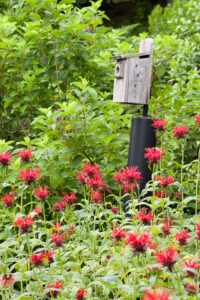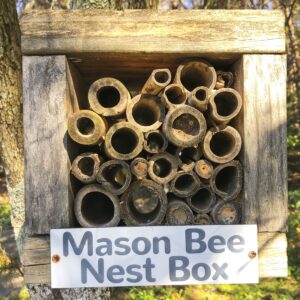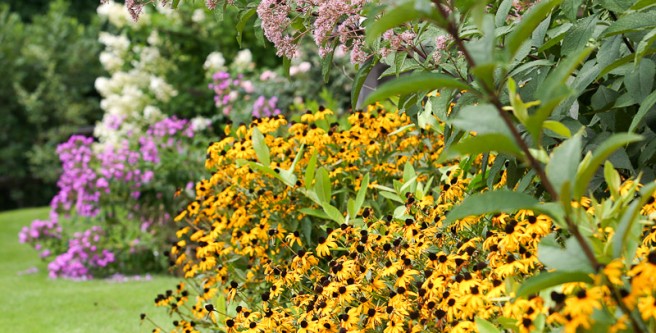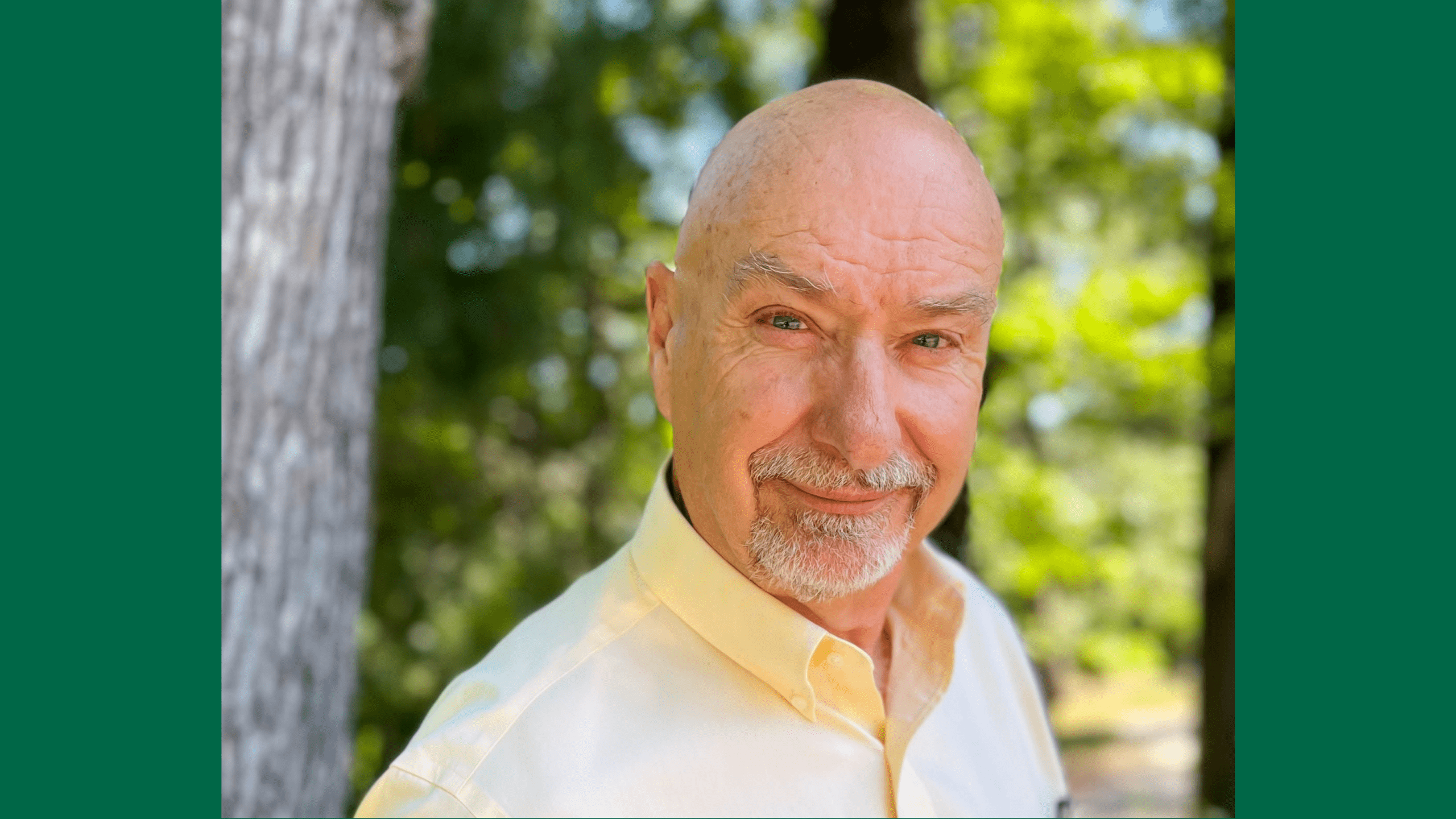
No aspect of our mission is more important than helping homeowners incorporate native plants into their home landscape designs. There are many resources available to you and we have tried to bring some of those resources together here in one place to make your planning easier. While landscaping projects can range from a small flower bed outside a kitchen window to a project involving many acres, remember that you don’t necessarily have to tackle the entire plan at once. If you’re more comfortable moving slowly, by all means choose one area to focus on at a time. It can be as simple as replacing non-native petunias in a small flowerbed with Bee balm (Monarda didyma)… seen in the image at left. This perennial, which is native to eastern North America, is a cherished source of nectar for hummingbirds, butterflies and many other native species.
So your first step is to jump in the car and head over to the big box store to buy plants, right? Unfortunately 90% of the plants available for sale the big box stores and many nurseries are non-natives. Don’t worry… that’s another education project we’re working on. But don’t despair, there are many excellent sources of plant materials… you just need to know where to look. And don’t hesitate to ask your local nursery to stock native plants… eventually they will get the message.
But before you set out to buy plants, you have to do a little planning. Is the area you’ll be landscaping sunny or in shade? Dry or damp? What type of soil? Will you need plants that grow to different heights to place from front to back in a bed? Once you know the answer to these questions, you’re ready to think about specific plants.
To get you started, take a look at this excellent video produced by NC State University entitled “Going Native: Urban Landscaping for Wildlife with Native Plants”. It’s only 10 minutes long but it is a VERY helpful starting point for any project involving native plants. So sit back, relax, grab a cup of coffee or a cup of Oswego tea made from that Bee balm you planted earlier, and enjoy the video.
These articles will provide you with more information about the use of native plants in the home landscape and include plant lists:
Carbon Gardening (April 2021) – An essay about the benefits of designing your ‘Living Landscape’ to also sequester carbon in the soil for the benefit of reducing carbon dioxide in our atmosphere.
Gardening for Life (Feb 2019) – An article by Doug Tallamy, author of the landmark book Bringing Nature Home, which clearly explains the problems caused by the rapid decline of native plant habitats and what the homeowner can do to help restore a small portion of what has been lost.
Native alternatives (Mar 2019)- These native plants are suggested as alternatives to invasive exotic species in Upstate South Carolina. All plants listed, both invasive exotics and natives, are available for sale in the market.
SC Coastal Native Plant List – An extensive native plant list for coastal regions of South Carolina
Shoreline Buffers & Water Quality (2020) – An excerpt from Life at the Water’s Edge, A Shoreline Resident’s Guide to Natural Lakeshoreand Streamside Buffers for Water Quality Protection in South Carolina, edited by Lin Roth, Ph.D., and published by Clemson University Public Service Publishing. This award-winning book includes chapters on designing, establishing, and maintaining vegetative water-course buffers, lists of recommended plants, as well as discussion of the importance of what’s at stake: the health of our watersheds.
The Chickadee’s Guide to Gardening – Why does what you plant in your yard matter? Read this article by Douglas Tallamy.
Native alternatives to lawn turf – Why and how.
Native plants for wildlife – Habitat Essentials for Wildlife: 1) Bio-diversity; 2) Food & Water; 3) Cover; 4) Housing/nesting. All plants listed are available for sale in the market.
Exotics or Invasives – A clarification of what these terms mean and why it is important that we know, an article by Christel Harden, Clemson University’s Department of Plant Industry.
The Importance of Native Trees (2020) – An essay that discusses trees as part of our “way of life” and what we can do to help preserve them.
Native Tree Identifier – A resource to help discover unique characteristics of individual trees.

Winter Gardening for Wildlife (Nov 2020) – An essay on making your garden a ‘living landscape’ during the winter months to better sustain our beneficial wildlife



